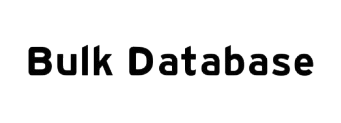NaaS is the next logical step in network technologies for manufacturers and companies – a network as a rented service. If a company buys new hardware, e.g. a switch , it no longer buys the device plus a support contract. Instead, it subscribes to a service, including hardware and some features. The actual switch is offered at a much lower price, but the costs for the features are spread over ongoing monthly costs.
The advantages:
Firstly, new purchases can be broken down into smaller amounts and included in the operating costs. This is much more attractive for companies with smaller budgets than being faced with a large one-off investment. And it gives them the opportunity to keep up with developments in network technology without having to save up the budget first.
In addition, manufacturers have to offer their customers something to make the subscription model attractive. Ongoing maintenance offers, for example, give Argentina Phone Number List companies constant access to services, configurations or changes from the manufacturer. This means they always stay up to date.
Hypothetically, companies could also save on their own network technicians through NaaS. The maintenance contract then indirectly includes the expertise of manufacturers such as Cisco, Aruba or HPE for network maintenance. A welcome thought experiment in times of a shortage of skilled workers.
AI for IT Operations (AIOPs) – Operating networks automatically
This very shortage of skilled workers and shrinking budgets are leading to further changes in network issues. Missing resources must be compensated somehow – and this can be done with smart automation. More specifically, with AIOPs .
In this process, certain tasks are transferred to an AI, which manages and operates them automatically and independently. In the future, this could reach a Cell Phone Number Database level where no human intervention is required to operate a network. But AIOPs are already in use today. More and more companies are working on developing AIOPs solutions and making them usable, including SolarWinds.
Looking beyond the network
If an application goes haywire, it’s all too easy to blame the network. Networkers know that it’s not the network’s fault. But they have to be able to prove it. And to do Bulk Database that, they need an understanding of how the rest of an IT system works. Networkers should therefore acquire a basic understanding of what’s going on in the entire infrastructure and which applications are being used.
To achieve this, all IT teams should gain a common overview of operations, processes, platforms and data. This will enable them to come to the right conclusions more quickly when problems arise. However, it is hardly possible to set this up manually. But this is exactly what centralizing technologies and solutions are for, e.g. SolarWinds Hybrid Cloud Observability .


